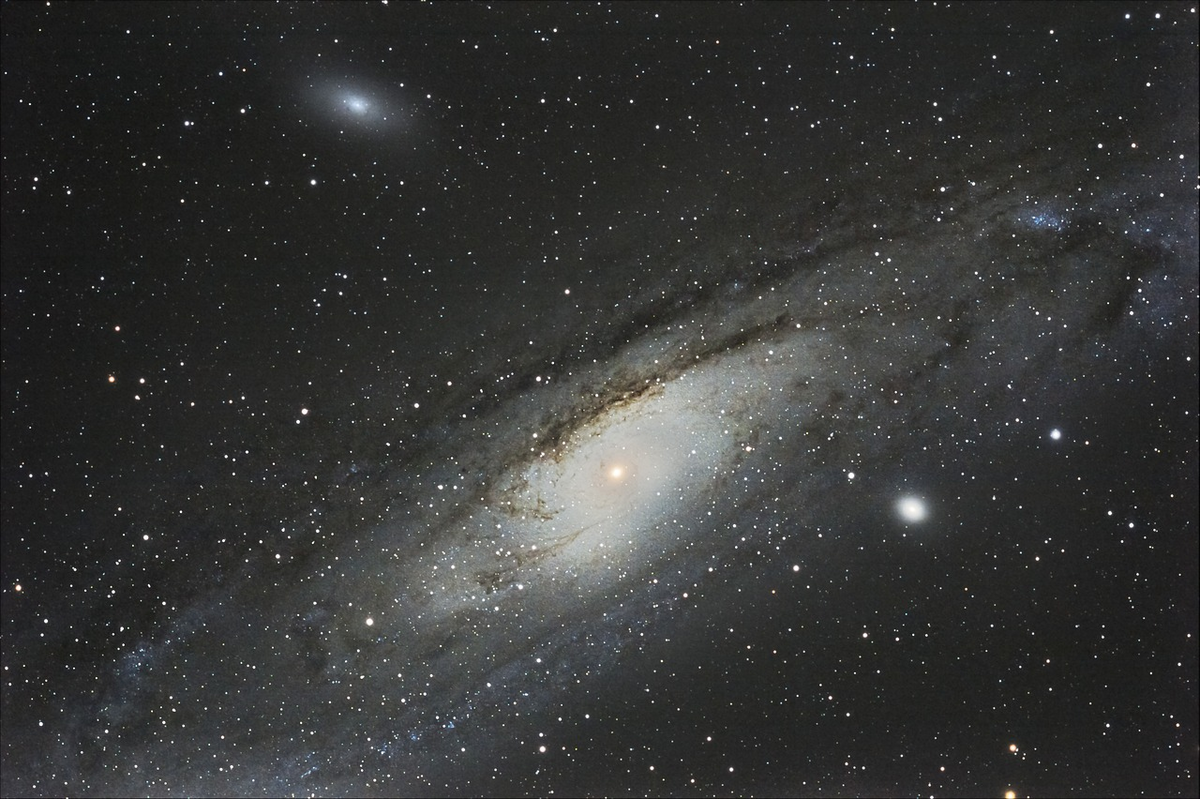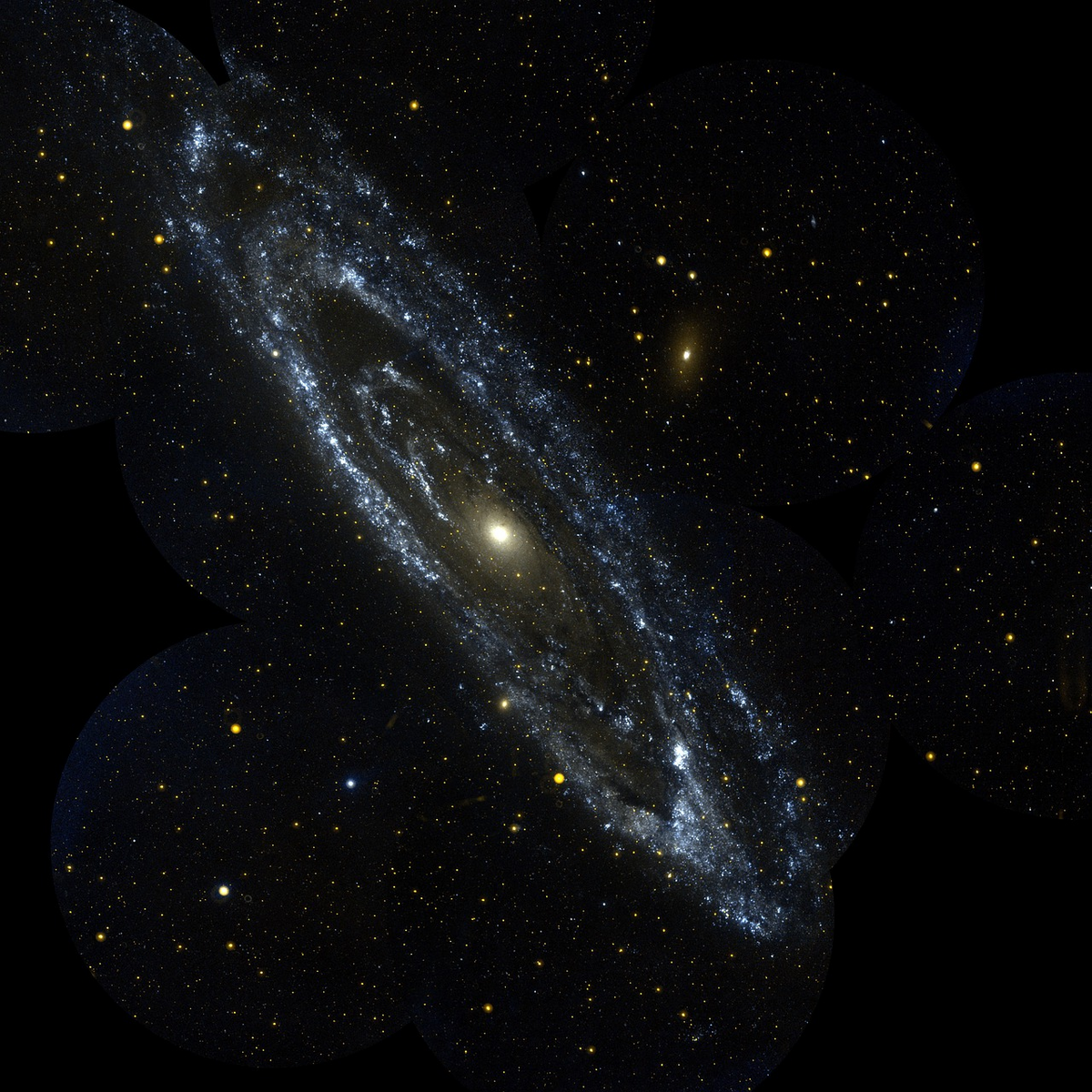
It’s actually very difficult to find planets outside our own solar system. That’s because, unlike stars, planets don’t emit light. Planets outside our solar system are called exoplanets.
The confirmed ones are within the boundaries of the Milky Way, our galaxy. But we’ve made some progress with respect to the galaxy Andromeda. Here’s all about it.
Ready? Let’s get started…
Andromeda Galaxy Planets: Short Summary
We know that there is one candidate for a planet in Andromeda and it’s currently named PA-99-N2. That’s a temporary name and we are still trying to confirm that it is actually a planet. If astronomers succeed, this will be the very first extragalactic planet we’ve discovered.
PA-99-N2 was detected as a result of an event in 1999. While we still can’t confirm that it is actually a planet, we’re almost certain that Andromeda has millions of planets. There are many stars in this galaxy and there is even a possibility that they are surrounded by billions of planets. We just don’t have an official confirmation.
Watch: Exploring planets in Andromeda with footage from Space Engine
What We Know About Andromeda

Andromeda is a galaxy that is elliptical and in what is called a Local Group which is a collection of 52 galaxies that are bound by gravitational forces. Our Local Group includes Andromeda and our own galaxy, the Milky Way.
Andromeda is the largest galaxy in our Local Group and it’s twice the size of Milky Way. Most of the galaxies in our Local Group are classified as dwarfs that orbit Milky Way, Andromeda and Triangulum.
Andromeda has two spiral arms and a total of about a trillion stars along with 25 satellite dwarf galaxies within. Now, it’s quite far away from our planet but if you are interested, you can see it with naked eyes on a clear night.
It looks like a small smudge when there is no moon and the light from this galaxy takes about 2.5 million years to get to us.
PA-99-N2
This planet is about 2,185,247 light-years away from our planet. It has a mass that is 2,015.5 times that of Earth. It’s in a constellation also called Andromeda and it is often also referred to as Messier 31 or M31.
Can It Support Life?

Now, for a planet to have the ability to support life, it needs to be in the Goldilocks zone. This is the space around a star in the planet’s system where the planet can have water in liquid form. And that’s what helps support life. At least that’s where we can start.
Now, we don’t know much about the stars or other planets in Andromeda because of its distance from Earth. So, naturally, we don’t know whether this planet is in the Goldilocks zone or even where the habitable zones are in this galaxy.
But statistically speaking, there is a possibility that there are planets on this galaxy that might be in the Goldilocks zone and hence the capacity for life. And experts say that this probability (not a possibility) is high!
For now, we’ll have to wait to answer this question while we also work towards confirming (or not) that PA-99-N2 is actually a planet. With the help of telescopes and imaging techniques, we will be able to find out all this and more, hopefully soon.
Andromeda Galaxy: A Little History

This has been a fascinating galaxy for a long time. Astronomers have been in love with it as far back as the 10th century. But we didn’t know much about it till the 1900s. In fact, we thought it was a nebula inside the Milky Way. That’s because up until then, we thought that Milky Way was the extent of the universe.
But soon, we realized that there are other galaxies in the universe. Notably, in the 17th century, Pierre Louis Maupertuis, a French mathematician floated the notion of other galaxies with their own planets, stars and other objects.
Later on, Immanuel Kant, the German philosopher quoted this notion in Universal Natural History and Theory of the Heavens.
In 1855, we saw the very first picture of Andromeda. It was still thought to be a nebula because the picture was not very clear. But in 1917, astronomer Heber Doust Curtis observed a supernova in this galaxy and decided to do some research.
Using Maupertuis’s island universe theory, Curtis realized that this one was about 500,000 light years away from our planet. And that other novae (plural of nova) were about 10 times less bright than this one. So, he brought the idea of extragalactic objects beyond the Milky Way back into the conversation.
This was not the most popular idea back in the day and it led to what is now called the Great Debate. The name might not have been as original as the idea, but by 1923, we had evidence that Andromeda was no nebula.
Astronomer Edwin Hubble (the name might ring a bell!) observed what is called a Cepheid variable star in this galaxy. It was a pulsating star that can be used to compute the distance between two celestial objects.
Eventually, the computations revealed that the theory of island universes was no notion. And that the “nebula” we were looking at was actually a new galaxy.
Frequently Asked Questions

Q: Is the Planet in Andromeda Like Earth?
A: The first confirmed exoplanet we found is called HIP 13044 b and we found it in 2009. We barely know anything about this planet that could tell us if it’s anything like Earth. In the case of PA-99-N2, we haven’t even been able to confirm that it’s a planet.
So, we’ll have to wait a while to answer this question. But the possibility can’t be ruled out.
Q: How Many Solar Systems Exist in Andromeda?
A: One trillion so far.
Q: Is There Life in Andromeda Galaxy?
A: We’re not exactly sure if there is life elsewhere in Milky Way (where the Earth is) outside our planet. It’s hard to tell if there is life in other galaxies.
Conclusion & Summary
We are close to confirming that Andromeda has one planet. It’s not official, yet so the object has temporarily been given the name PA-99-N2. We also know that Andromeda could possibly have millions of planets. But since it’s very far away from planet Earth, we don’t really know very much that would help us get confirmations.
